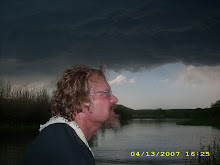
They only boiled at night. The smoke trail easily seen on a windless day. Tomorrow they would break camp and move the factory again. Ricardo dumped another basket of candelilla into the hot vat of water and acid. The fumes stung his nostrils and his eyes blurred. “Hold it right there,” they heard the voice in the darkness say. “Los Rinches,” Ricardo yelled and the team of four quickened for the river.
For over a hundred years the candelilla plant, a shrubby blue-green spurge with a dense cluster of erect leafless stems has been harvested for wax. Native to the Trans-Pecos and Northern Mexico, attempts at farming the plant has failed. Only the wild candelilla produces commercial quantities of candelilla wax. Smuggling of the wax across the Rio Grande to capture the higher price in this country prevailed for years until cheaper synthetic waxes displaced most of the demand for pure natural candelilla.
Up until the 1970’s, because of over-harvesting in Mexico, illegal wax factories operated in the Big Bend National Park and were the object of raids by park rangers who set out to enforce the illegal gathering of the plant in Texas.
On both sides of the river, the small mobile factories were targets for raiders and law enforcement alike. In 1914 Poncho Villa raided an American camp in Glenn Springs, prompting the US to send a 100,000 soldiers to the region.
Cererros gathered the wild desert plant and loaded their cargo on burros transporting it to candelilleros, the wax makers who boiled the stems usually at a remote cleft in the desert, skimming the wax from the top of the hot acid, cooling it and cutting it into squares for on transport to the dealers located in Presidio, Chihuahua and Alpine.
One of the few large scale candelilla factories operated in Presidio during WWII and produced 25 tons a day.
Candelilla wax consists mainly of hydrocarbons and is still used today when a high quality natural wax is needed. It has a melting point of 184 degrees. In Europe it is used as a glazing agent and food additive. Lipstick and chewing gum manufacturers worldwide pay top dollar for it, importing the product from Mexico, where gathering of the wild plant is still commercially feasible.
